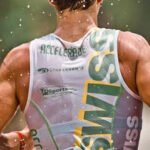Understanding how to have an athlete at his or her best come race day is a crucial aspect of programming. Whether you’re a coach or an athlete, it’s important to have a clear understanding of the individual’s strengths and weaknesses, as well as the timing of the event.
If you’re working with an athlete who is experienced, talented in their sport, or responsive to training phases, they may require a specific program tailored to their abilities in order to peak for their event. Timing is critical, and the athlete must be given the appropriate amount of quality work in order to perform at their best.
If the timing is off or the athlete is given too much work, they risk falling short during their big event.
It’s important to consider the time of year, number of events already completed throughout the season, and how long the season has been. As the season progresses, the athlete may be carrying a high annual load, making it easier to achieve peak form quickly, but also increasing the risk of burnout or injury.
In the beginning of the season, less experienced athletes or those with a different natural inclination (diesel type athlete), a program with larger training blocks and more total work may be necessary in order to prepare for the event and achieve event readiness.
For slow responders, it may be necessary to have longer quality phases leading up to the event to ensure they are performing at their best.
Ultimately, understanding the right amount of quality work for each individual athlete is an art, and it’s important to always go back to the basics of aerobic work, strength training, and technique if you’re unsure.



